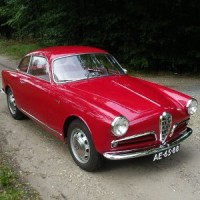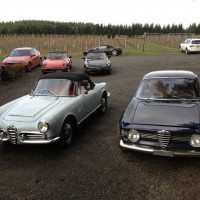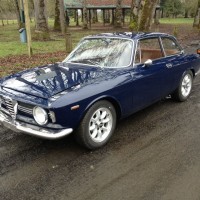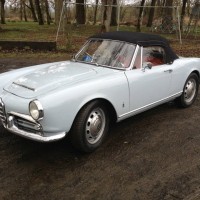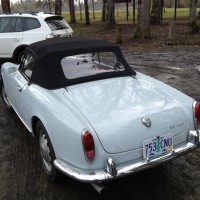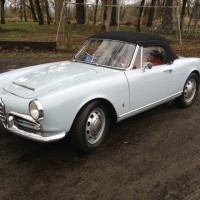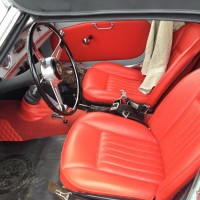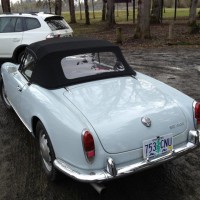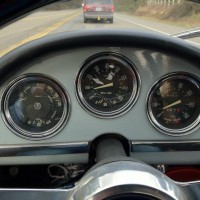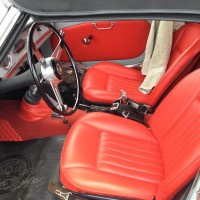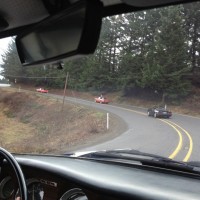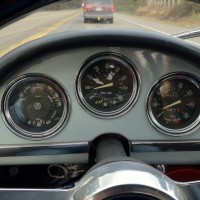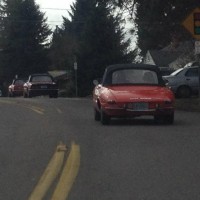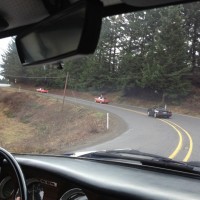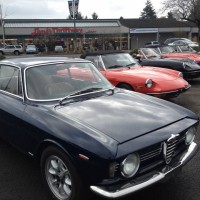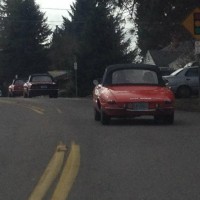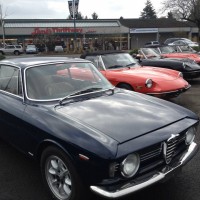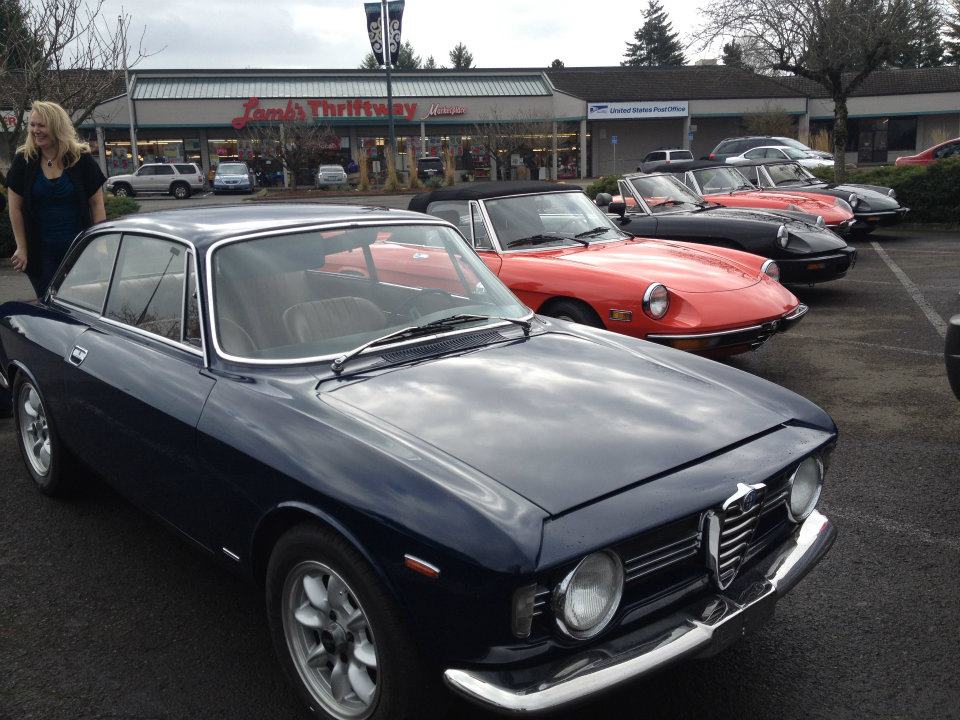
There were about a dozen cars in all, and aside from our little team and one 1969 boat-tail spider, the rest were late-model squaretails of assorted varieties—exactly the 1983-89 models I sold new when I worked at Ron Tonkin Grand Turismo.
They’re nice enough cars, and with the right suspension work and engine tuning (especially camshafts), can be made to feel like proper Alfas. Best of all, they are still affordable, with $10,000 buying you a very, very nice one.
 Not surprisingly, there were no Milanos or 164s. With a limited appeal to begin with due to their four-door configuration, they have tended to fail in very expensive ways, and the number on the road has diminished quickly. Nearly any Milano or 164 still surviving today is just a $1,500 repair bill away from the junkyard, and sadly repairs of that magnitude are not infrequent.
Not surprisingly, there were no Milanos or 164s. With a limited appeal to begin with due to their four-door configuration, they have tended to fail in very expensive ways, and the number on the road has diminished quickly. Nearly any Milano or 164 still surviving today is just a $1,500 repair bill away from the junkyard, and sadly repairs of that magnitude are not infrequent.
Earlier Alfas continue to spiral upwards in price, taking them out of the hands of the weekend hobbyists and enthusiasts who are the backbone of any club. When a car turns from “fun” into an “investment,” owners just look at them differently, and are often more protective of how they are used.
I’m lucky in that both my Alfas are slightly scruffy on the outside, with restored interiors and first-rate mechanicals. That allows me to take them down gravel roads without being paralyzed by “rock chip phobia.”
The squaretail Alfa convertibles represent the affordable sweet spot for those seeking an Alfa experience. My advice is the same as always: have the car checked out by an expert, buy one that has been looked after by a reputable Alfa shop, and don’t be afraid of paying retail for the right one. As a friend recently put it, “A cheap sports car will be the most expensive car you ever own.”
 I continue to be in the hunt for a 101-series Giulietta Sprint Veloce. My ideal car is complete and correct, restored some years ago and properly fettled by being used on events. A 5-speed is a nice upgrade. If you’ve got a spare one, drop me a note at keith.martin@sportscarmarket.com.
I continue to be in the hunt for a 101-series Giulietta Sprint Veloce. My ideal car is complete and correct, restored some years ago and properly fettled by being used on events. A 5-speed is a nice upgrade. If you’ve got a spare one, drop me a note at keith.martin@sportscarmarket.com.
